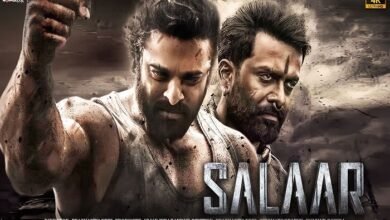Canon Event Examples: A One-Stop Gateway to Iconic Moments

Canon events play a crucial role in shaping the storylines of our favorite movies, books, and TV series. They are essential, defining moments that characters must face to grow, develop, and move the plot forward. In this one-stop gateway, we will take a deep dive into some of the most memorable canon event examples across various forms of media. Whether you’re a fan of superhero tales, classic literature, or epic fantasy, this guide will provide a comprehensive overview of what canon events are and their significance in storytelling.
What Are Canon Event Examples?
Canon event examples refer to pivotal moments that fundamentally shape the storyline or characters in fiction. These events are non-negotiable occurrences that change the course of a character’s journey, serving as key milestones. Canon events are crucial for maintaining continuity within a story, ensuring that characters evolve in a manner consistent with the narrative. By understanding canon event examples, readers and viewers can gain insight into why specific scenes are so impactful and why they cannot be changed without altering the essence of the story.
Canon Event Examples in Superhero Movies
One of the most iconic canon event examples in superhero movies is the death of Uncle Ben in the Spider-Man series. This event becomes the defining moment that motivates Peter Parker to take on the responsibility of becoming Spider-Man. Without Uncle Ben’s tragic demise, Peter would not have the drive or moral compass that makes him the hero we know today. Canon event examples like this illustrate how an irreversible moment can provide the foundation for character growth, emphasizing themes such as power, responsibility, and sacrifice.
Canon Event Examples in Fantasy Fiction
Canon event examples in fantasy fiction are often grand and transformative, leading to major shifts in the story’s world. In “The Lord of the Rings,” Frodo’s decision to take on the responsibility of carrying the One Ring is a canon event that sets the entire story in motion. This choice marks a turning point not only for Frodo but also for Middle-earth as a whole. Canon event examples in fantasy fiction highlight the hero’s call to adventure, showcasing the sacrifices made for the greater good.
Canon Event Examples in Classic Literature
Classic literature also contains numerous canon event examples that shape characters’ journeys and the plot. In “Pride and Prejudice,” Elizabeth Bennet’s rejection of Mr. Darcy’s first marriage proposal is a significant canon event that changes both their lives. This moment is essential for the character development of both Elizabeth and Darcy, leading to their eventual understanding and growth. Canon event examples in classic literature demonstrate how crucial turning points in relationships and personal growth are for the storyline.
Canon Event Examples in Coming-of-Age Stories
Coming-of-age stories often feature powerful canon event examples that propel characters toward adulthood. In “The Catcher in the Rye,” Holden Caulfield’s expulsion from Pencey Prep is a canon event that triggers his journey through New York City. This experience forces him to confront his fears and insecurities about adulthood and the world around him. Canon event examples in coming-of-age stories are crucial for depicting the struggles of growing up and finding one’s place in the world.
Canon Event Examples in Sci-Fi Universes
Canon event examples in science fiction are often rooted in technological advancements or life-altering decisions. In “Star Wars,” Luke Skywalker’s decision to leave Tatooine and join Obi-Wan Kenobi is a pivotal canon event. It marks the beginning of his transformation from a farm boy to a Jedi Knight. Such canon event examples in sci-fi explore themes like destiny, heroism, and the battle between good and evil, showing how individual choices can change the fate of the universe.
Canon Event Examples in Horror Stories
In horror stories, canon event examples are often the catalyst for terrifying experiences. In “The Shining,” Jack Torrance’s decision to take the caretaker job at the Overlook Hotel serves as a canon event that triggers the story’s descent into horror. This moment is non-negotiable because it sets in motion the psychological unraveling of Jack and the haunting experiences of his family. Canon event examples in horror emphasize the inevitability of fate and the often dire consequences of seemingly innocent decisions.
Canon Event Examples in Tragedies
Tragic canon event examples shape the inevitable downfall of characters, highlighting themes of fate and consequence. In “Romeo and Juliet,” the death of Mercutio is a canon event that changes the entire trajectory of the story. It leads to Romeo’s vengeful killing of Tybalt, setting off a chain of tragic events that ultimately leads to the lovers’ demise. Such canon event examples in tragedies demonstrate how a single irreversible action can lead to devastating consequences, reinforcing the inevitability of fate.
Canon Event Examples in Mystery and Thriller
Mystery and thriller stories also rely heavily on canon event examples to drive suspense and plot twists. In “Gone Girl,” Amy Dunne’s disappearance is a canon event that sets the entire story into motion. This event not only leads to the unraveling of her marriage but also reveals the dark secrets hidden beneath the surface. Canon event examples in mysteries and thrillers are critical for maintaining suspense and engaging readers, as they provide the foundation for twists and character revelations.
The Importance of Canon Event Examples in Storytelling
Canon event examples are essential for creating memorable and impactful narratives. They act as anchor points that guide the storyline and ensure character development remains consistent and meaningful. Without canon events, stories would lack direction, and characters would lack the depth needed to resonate with audiences. Canon event examples help to create structure, build tension, and provide emotional payoffs that make stories unforgettable. They are the key moments that define the journey of characters and the essence of the story.
Conclusion: The Lasting Impact of Canon Event Examples
Canon event examples serve as the backbone of storytelling, providing pivotal moments that define characters and plotlines. These essential turning points ensure that stories are engaging, emotionally resonant, and logically consistent. From superhero films to classic literature, canon events are present across all genres, offering viewers and readers moments of transformation, sacrifice, and growth. Understanding canon event examples helps us appreciate the craft of storytelling, allowing us to see how seemingly small moments can have a profound impact on the overall narrative.
FAQs
1. What is a canon event example? A canon event example refers to a pivotal moment in a story that fundamentally changes the plot or character development. These events are essential for maintaining continuity within the storyline.
2. Are canon events always tragic? No, canon events are not always tragic. While some canon event examples, like deaths in tragedies, are sad, others are transformative or positive moments that shape the characters’ journey.
3. Can a story have more than one canon event? Yes, a story can have multiple canon event examples, as they often act as critical turning points in different stages of the narrative. These events guide character development and plot progression.
4. Why are canon event examples important? Canon event examples are important because they provide structure to a story, ensuring character growth and maintaining the logical flow of events. They are crucial for creating emotional impact and engaging audiences.
5. How can I identify a canon event in a story? To identify a canon event example, look for moments that significantly impact the plot or a character’s development. These events are often non-negotiable and essential for moving the story forward.




